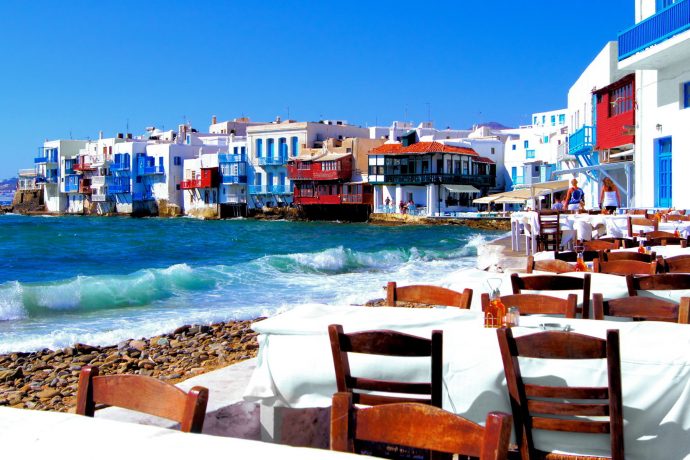Known for its overabundance of ancient ruins, sunny beaches, whitewashed villages, tasty cuisine and friendly environment, it is no wonder that Greece is ranks among Europe’s top travel places. Greece is created of a mountainous natural ground and hundreds of islands where each one provide its own share of stunning landscapes, historic sites, cultural delights and nightlife scenes. An overview about where to go in Greece is listed below:

Cape Sounion: Located at the southernmost point of the Attica peninsula, Cape Sounion is best called as the site of the carcase of the oldest Greek temple of Poseidon (the god of the sea). The remains are settled on the headland, occupied on three sides by the sea. The site is a famous day-excursion for travelers from Athens, with sunset over the Aegean Sea, as observed from the ruins, a sought-after spectacle.
Thessaloniki: The Greece’s second-largest city is Thessaloniki and the capital of the Macedonian domain of Northern Greece. Lively social events, festivals and a buzzing nightlife make this city the ethical capital of Greece. It also comprised of a historic city center and financial district. Thessaloniki offers both old and new charming from its White Tower, Byzantine walls and Turkish baths to colorful food markets, art galleries and museums.
Zagori: Zagori is a district of great natural attractiveness, with distinctive geology and in northwestern Greece, two national parks. It’s thick forests and rough mountains are crumpled by powerful rivers and spotted with traditional villages, many appear grand stone houses dating from the past eighteenth century. The best way to have fun at this area is by walking the numerous paths connecting to the villages. The most attainable and adventurous target is the wonderful Vikos Gorge.
Halkidiki: Halkidiki is like a three pointed spear peninsula near the city of Thessaloniki, sporting superb beaches. The three separate island can be roughly described as follows: Kassandra has a nightlife, Sithonia has beautiful beaches and Athos has amazing monks. Being closest to Kassandra, Thessaloniki is more erected, while the more quiet Sithonia has ground for camp, hidden clear water and coves. Both are popular with Greek and Eastern European travelers. Much of the easternmost peaks belongs to the Mount Athos monastic community. It’s reachable by boat and pilgrims is open to male only.
Peloponnese: Shaped much like a large leaf, Peloponnese was anciently known as Morea, which literally refer to mulberry leaf. It is situated in the southernmost district of both Europe and Greece. Peloponnese is a broad peninsula joined to the mainland by the Rio–Antirrio bridge. Disperse with classical Greek temples, Byzantine churches, Mycenaean palaces and Venetian fortresses, Peloponnese buzzing the ancient cultures and events from its vast history.
Delphi: Second to the Acropolis in Athens, Greece’s Delphi is the most famous archaeological site. Situated about two and half hours from Athens along with the slopes of the awe-inspiring Mount Parnassus. Delphi was once complimented by the old Greeks as the center of the earth. Devoted to the god, Apollo, Delphi was an essential oracle.

